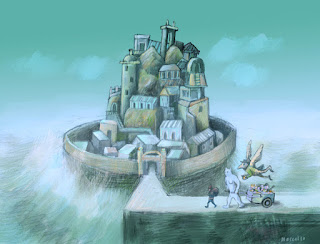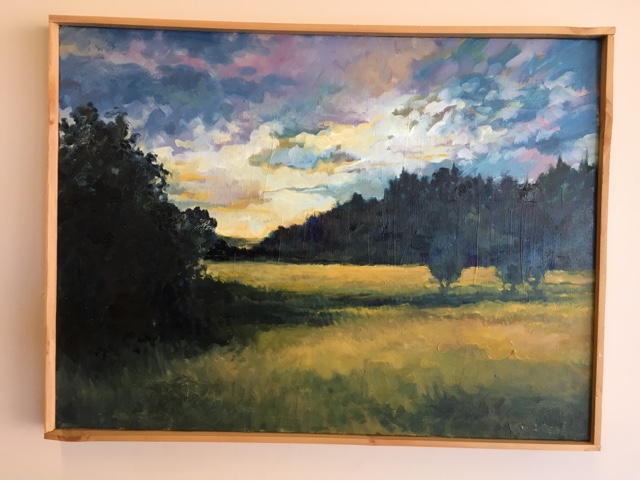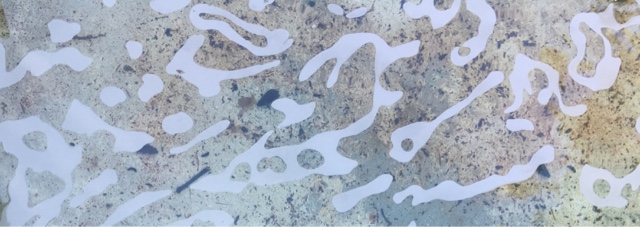It was so freaking hot. But we finished. pic.twitter.com/HERpNvXr6V— Arcane Melt (@greatseamonster) July 29, 2016
For my portfolio check out the special links below. I use this blog as a general hub for all my art activity : Diary, Catalog, Doodles, Musings, Reactions, Announcements, Scrap-book, video, Special Features: All art created & owned by Nate Marcel unless otherwise specified by annotation or label.
Thursday, July 28, 2016
Jungle Room Mural Finished
Wednesday, July 27, 2016
Monday, July 25, 2016
Tweet by Sage on Twitter
 | Sage (@olde_fortran) |
I was not prepared for how thick and colorful this thing is. pic.twitter.com/UZoxPNMmw4 | |
Download the Twitter app
Sent from my iPhone
Sunday, July 24, 2016
Printing With A Direct to Garment Printer – From Start to Finish [feedly]
----
Printing With A Direct to Garment Printer – From Start to Finish
// Ryonet Blog

A (DTG) direct to garment printer is a digital printer that, you guessed it, prints directly onto the fabric. Direct to garment printers are great because they have the ability to maintain high detail, have full vibrant colors and result in beautiful prints. Sound easy enough? It can be if you do it right and use it for the right type of job.
DTG prints are ideal for short print jobs with full-color art on basic cotton or poly blend garments. It is recommended to use combed cotton or poly-cotton blends, such as ringspun. You want to avoid heavy, rough cotton and polyester blends, because of dye migration. If you are printing a logo on 500 shirts, you going to be better off screen printing, but if you are printing, say 36, DTG is a fantastic route. Unlike manual screen printers, DTG printers print only a small amount of ink; they also lay down an extreme amount of detail; this means the better quality shirt you print on, the better your print will look.
How to print with a direct to garment printer
1. Pre-Treat
Pre-treatment mats the shirt fibers together and gives a base for the print to stand up on, for dark garments, it also chemically sets the white under the base so you can print color on top of it. Once you spray the pre-treatment, we tap it with a heat press to matt the fibers down for about 35 seconds at 350 degrees.
2. Garment Placement
Place your garment on the direct to garment printer's pallet, smooth out the fabric and apply the hoop to smooth out the garment onto the print platen.
3. Garment Creator
Next, jump into the Epson Garment Creator and drag in the artwork. Once it is centered and placed, hit print to the Epson F2000 RIP, which is friendly to Mac and PC. The RIP converts all of the color data and detail and making it compatible with the DTG ink set used in the Epson F2000.
4. Printing
The printer receives the information, loads the shirt and starts printing. On a dark garment, it prints the white under base first and then cycles back through to print the color overprint. With a 10 x 12 inch design it takes three minutes to print and uses approximately $3.00 of ink.
After printing, set the shirt either in a heat press for around a minute or down a large convection conveyor dryer, which works great if you have a lot of these direct to garment printers going at once.
Check out this video and have Ryan walk you through the process, step-by-step.
See the difference yourself, get some some free samples of prints made by an Epson SureColor F2000.
The post Printing With A Direct to Garment Printer – From Start to Finish appeared first on Ryonet Blog.
----
Shared via my feedly newsfeed
Sent from my iPhone
Weighing The Opportunity Cost Of DTG vs Screen Printing [feedly]
----
Weighing The Opportunity Cost Of DTG vs Screen Printing
// Ryonet Blog

The definition of opportunity cost, per Investopedia, is: "The cost of an alternative that must be forgone in order to pursue a certain action. Put another way, the benefits you could have received by taking an alternative action."
That's a lot of jargon, but it really just means that when faced with two options, by choosing one option you are giving up the potential good outcomes of the option you did not choose.
From automation vs manual printing, DTG vs screen printing, or water based ink vs plastisol ink, screen printing shops have to be ready to make these decisions on a daily basis. Each one of these choices in technology provides different opportunities for a business to grow. With that, however, comes the opportunity cost of NOT choosing one of them.
The popularization of automated screen printing technology has enabled printers to go from a production capability of 200 shirts a day on a manual press, to upwards of 1000 or more shirts a day on their ROQ. At the other end of the spectrum, Direct to Garment printing with the Epson F2000 has enabled printers to offer small batch, highly customizable garment prints while still remaining profitable. Giving them the ability to scale up quickly and with agility.
One of the opportunity costs of choosing more traditional screen printing over a DTG printer is having to sacrifice small batch, high profit & time sensitive jobs.
A Direct to Garment printer is the master at this particular niche in screen printing. With a DTG printer, you are able to take in highly detailed prints at low numbers and output them quickly, with very low labor. Because the function of DTG printing is so different than traditional screen printing, your pricing strategy should also be different. Direct to garment printing has operating costs that include the ink, the garment, maintenance, and labor. A typical 1-off print on the Epson F2000 will cost $3 in ink, a nice 100% cotton double ring-spun garment is about $3, pretreat will cost around $.50 and production time is about 6 minutes or $1.50 in labor if you were paying $15 an hour. An average print off the Epson F2000 will cost $7.50 in materials and labor.
Typically these 1-off prints are being offered at $29 or higher depending on the amount of setup required to run the job. (Please also keep in mind that your fixed operating costs will need to be accounted for to determine profit margin.)
So, if I was to price a 6-color job of 10 shirts via the Epson F2000, my costs would be $75 with a 1 hour production time. Costs on my Riley Win 6-color 4-station could range from $55 to nearly $200 with a 3-hour production time depending on the materials required and what is on hand.
Choosing a DTG means choosing a specific business model, designed and optimized for customers who can benefit the most from DTG printing. As such, screen print shops have to decide which action/technology is best suited to handle each customer's requirements. Production schedule, job requirements, supplies on hand, and time constraints all play a big factor in the opportunity costs of choosing one technology over another.
You can have great success when choosing a DTG vs screen printing when you target small run, high detail jobs. A natural place to learn more about these kinds of customers is right in your backyard with your local art or photographic community. Try connecting with the customer in your niche at local galleries, farmers markets, and festivals.
Want to find out more about how DTG printing works? Check out this blog post that shows you the process of creating a DTG print, from start to finish.
The post Weighing The Opportunity Cost Of DTG vs Screen Printing appeared first on Ryonet Blog.
----
Shared via my feedly newsfeed
Sent from my iPhone
Thursday, July 21, 2016
Thursday, July 14, 2016
Chalk Art
Pokemoned the park today. pic.twitter.com/T8u3wjJtBk— caramel ten (@greatseamonster) July 15, 2016
Tuesday, July 12, 2016
Children's Book Illustrations.
I someday may finish it.
I also thought about building it into a game. The main characters represent some of the character classes that could be available for play: Bluefoot, gnome, duck, cat, human, birdperson (which migrated into my Dangertide stuff.) The main adventure is based on collecting as many exotic presents as you can to give to the green monarch on her birthday.
Sunday, July 10, 2016
Wednesday, July 06, 2016
Monday, July 04, 2016
Saturday, July 02, 2016
Painting at the theatre today.
Sketchbook shelf
Sometimes I get down on not making more stuff. This is one consolation, it's not the big stuffed animal but I can at least knock down some ducks.







































